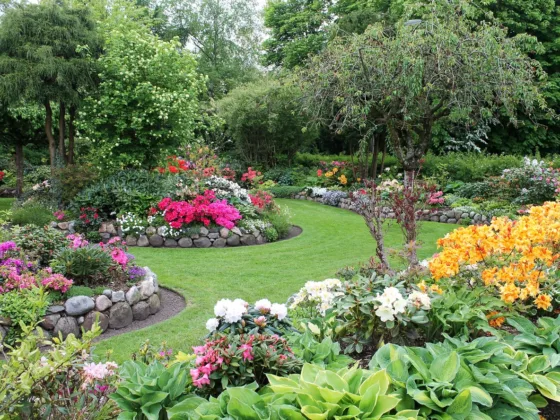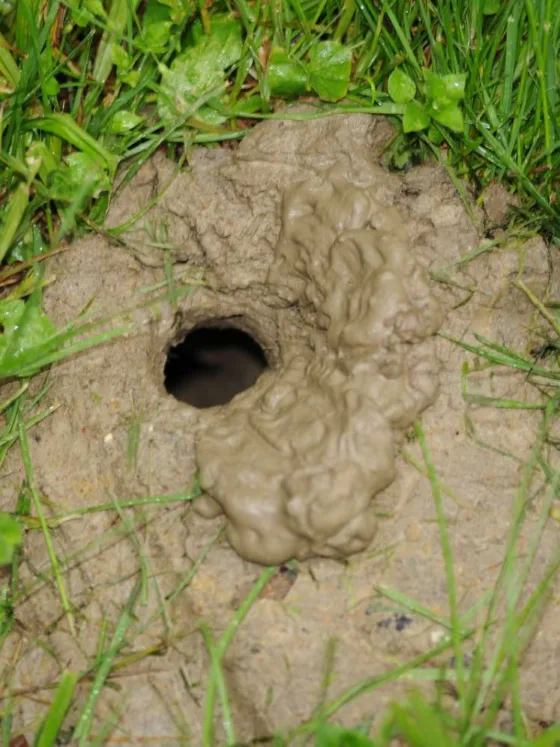Table of Contents Show
What are the benefits of organic lawn and garden care? Lawns and gardens cared for organically produce plants with greater drought tolerance, disease, and insect resistance, and yields. In the long run, organic gardening is less expensive and time-consuming than chemical alternatives.
The food you eat is chemical free and your lawn and garden won’t make kids and pets sick. Pesticides have been linked to birth defects, hormonal imbalances, cancer, and many neurological problems.
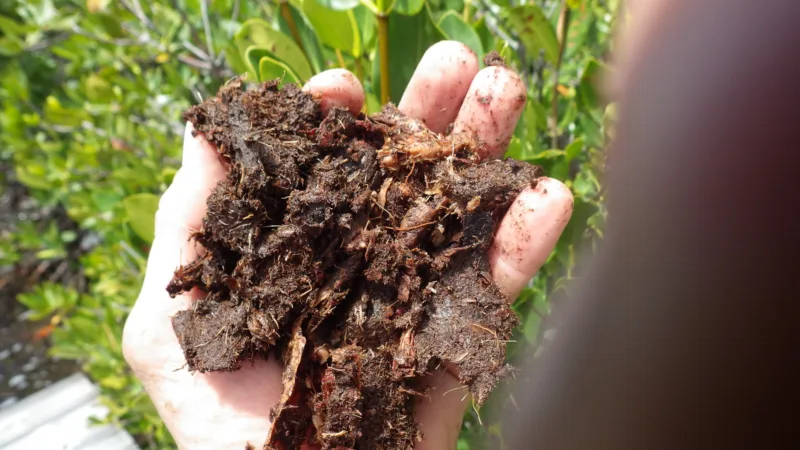
For many years people in the horticultural and agricultural industries have known that plants fertilized organically required less fertilizer than plants fertilized with synthetic fertilizer. It was long believed that synthetic fertilizers did not encourage the growth of microorganisms that live in the soil and transform nutrients into forms that can be absorbed by plant roots.
Recent studies have shown that the application of a synthetic fertilizer actually kills a significant percentage of beneficial microorganisms. These tiny creatures are responsible for more than just breaking down the organic matter (derived from such things as grass clippings, pulled weeds, compost, and organic fertilizer) into usable forms.
Some convert nitrogen from the air into a plant-useable form. Others are disease organisms that keep cutworms, chinch bugs, and grubs, to name a few, in check.
It can take six weeks for the soil organisms to recover from one application of synthetic fertilizer. Most lawn fertilizer manufacturers recommend 3 or 4 applications per year. This effectively means that the lawn is unable to break down organic material at a natural rate for 24 weeks of the growing season (about 28 weeks long for grass).
Long-term use of synthetic fertilizers can cause a lawn or garden to become a wasteland on the microscopic level where only the most tolerant of microorganisms can survive.
Soil deprived of its microorganisms undergoes a decline in soil structure. Air and water retention and the ability to retain nutrients decline. Plants stressed by soil conditions are much more susceptible to damage from insects and diseases.
Healthy, organically balanced soil encourages a plant’s natural immune system, while limiting the population of disease organisms and insects, to create the best conditions for growth.
Here are some steps you can take to help your garden or lawn on the road to recovery.
1. See Where You’re At
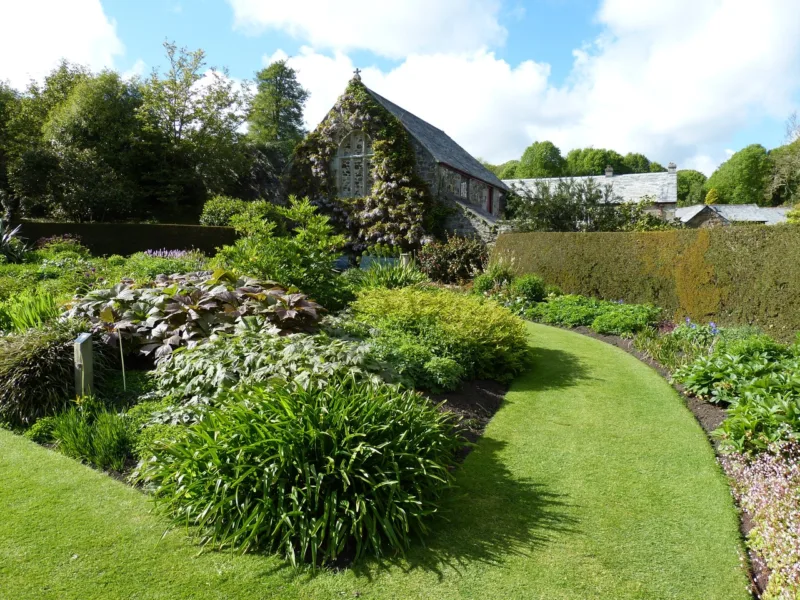
Test your soil to determine the organic content by placing a couple of cupfuls (taken from a depth of 0 – 12 inches) in a glass jar (after removing any leaves or roots), shake it up well with some water, and let stand for one day (if your sample’s water doesn’t clear in a day you have a lot of silt in your soil and it may take up to a week).
Your sample will precipitate in layers. Compare the amount of (odd-shaped) material on top of the soil and floating on the surface to the rest of the soil. That’s your organic material.
2. Top Up Your Organics
Properly aged compost contains many of the beneficial microorganisms that your soil needs for revitalization. When you add compost to your soil try to achieve 15% organic content in the first foot of soil (if your soil is poor then the area closest to the surface will have 2 to 3 times the organic content of the soil 12 inches deep).
A soil with 5% organic content will require the addition of just over one inch of compost. For quickest results work it into the garden. For lawns (or less energetic gardeners) top-dressing (spreading evenly on the surface) will achieve similar results after several weeks.
The compost you use can come from a backyard composter, or farm animal manure (there is a new strain of e-coli bacteria which has been found in some composted farm animal manure; as a precaution, when using this for the vegetable garden, only use this type of manure in the fall, after harvest, or in the spring 8 weeks before harvest), shrimp castings or even sewage sludge (sewage sludge may contain high levels of heavy metals and should not be used on the vegetable garden).
It is important that the product is properly composted before you apply it to a lawn or planted garden (you can apply raw compost to a garden in early spring, at least 4 weeks before planting, provided the soil is above freezing and the garden is well watered after application). ‘Raw’ compost can burn plants. The rule of thumb is ‘if it stinks don’t use it!’.
Compost applied to a lawn will greatly reduce the thatch layer which can expose your lawn to sunburn/heat stress in summer. The degree of stress involved depends on the thickness of the grass and how short you cut it. Sparse lawns or those cut to a height of two inches or less are most at risk. To play it safe, apply compost to lawns in early spring or fall only.
3. Keep it Going
Once your soil reaches the desired organic content (most plants perform well at 15% but some plants prefer ‘poor’ – 5% or less or ‘rich’ – 30% or more) it will have to be maintained.
It can take 3 years to rehabilitate poor soil but once that’s done all you have to do is replace the equivalent amount of the plant material you remove. If you leave your clippings on the lawn then the only material to replace is the weeds that you pull – generally 1/4 inch of compost every fall.
For ornamental gardens, consider the leaves/fruit of deciduous shrubs, weeds pulled, and the total mass of all plants removed during spring/fall cleanup – generally 1/2 inch every spring or fall. For high-yield vegetable gardens consider the fruit, plants, and weeds – generally 1.5 – 2 inches of compost every spring or fall. Include the amount of any organic fertilizer used in your determination of how much compost to add.
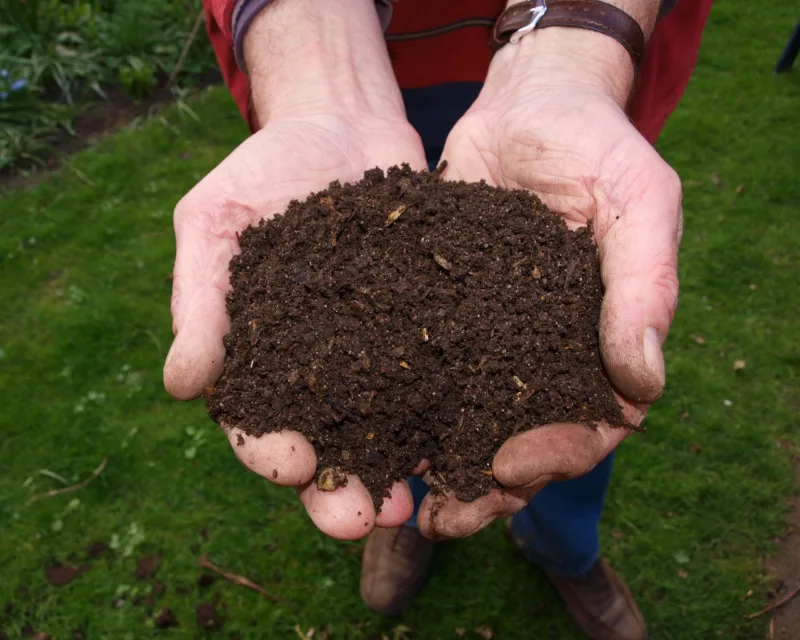
4. How Do I Know if I’m Overdoing It?
If your vegetable plants are large and healthy looking with a poor yield, or your perennials are big and green with few or no flowers, then there is too much nitrogen being supplied by your compost – test the soil and don’t add compost until you return to the 15% range. Yellow, brown, red, or purple leaf margins may also indicate an excess of nutrients in your soil.
Read Also:
5. What About Organic Fertilizers?
Most poor and improving soils will benefit from the application of organic fertilizer (beware of synthesized fertilizers claiming to be ‘organically based’ – much of their make-up is chemical).
During the initial part of the transition from synthetic to organic, you will have to apply organic fertilizer as often as you applied synthetic (you will likely require a spring, summer, and fall application for lawns). By the third year, you will need to apply less (no more than twice, spring and fall, for lawns).
Once your lawn/garden has healthy, well-balanced soil, an application of fertilizer is appropriate if you want your plants to grow larger or produce more fruit or flowers. Lawns will benefit from one application per year in spring or fall, but won’t complain if you miss a year here and there.
Annuals and vegetables require the most – short-lived plants lead their lives at a hectic pace; perennials (including grass), shrubs, and evergreens require less. Most trees require little fertilizer (unless diseased).
In general, nitrogen-rich fertilizers, where required, should be applied more heavily in spring (when most new growth takes place) than in summer (leaf growth in summer can get scorched) or fall (new growth in the fall will usually die back in the winter).
Cool-weather plants such as grass will benefit from a light fall application. Trees (and many shrubs) have woody growth in the fall (trunks get thicker) and root growth through fall and winter and may benefit from a light feeding of phosphorous and potassium. All long-lived plant material will benefit from the application of organic root-encouraging fertilizer, such as bone meal, during transplanting.
Adding compost to your soil also adds nutrients, but the quantities required to do the same work as an organic fertilizer will tend to make the soil too rich and most plants unhappy.
6. What Else Can I Do for My Plants?
For nearly twenty years endomycorrhizal fungus (myke for short) has been tested all over the world in studies to determine the impact of adding this material to the soil at planting or transplanting time. This naturally occurring fungus was once in your soil but has been decimated by synthetic fertilizers and pesticides for years.
Adding it back in at planting time has been proven to greatly reduce transplant shock, increase the ability of plants to absorb nutrients and water, enhance disease resistance (especially root diseases), and improve yields.
Companion planting is another great (and easy) way to improve the health and productivity of your plants. Companion plants help out by discouraging insects (marigolds), fixing nitrogen from the air in forms available for other plants (pole beans and corn – the corn stakes the beans, and the beans feed the corn), shading plants in the heat of the summer (corn or sunflower shading cucumbers or squash), boosting growth in their neighbors for no apparent reason ( tomatoes and basil grown together to increase each others’ yield by 30-40%) and killing microscopic soil-borne disease organisms (chives or garlic planted near roses kill black spot fungal spores in the soil).
Another thing that you can do is to plant your plants where they want to be. Moisture-loving plants in dry areas become stressed (and vice-versa). Stressed plants attract insects and are less able to fend them off (they are also more susceptible to disease). Plants that are properly sited have generally endured for millions of years without needing you to spray them!

Mulch will help your plants by retaining moisture, cooling the root zone, and suppressing weeds. Cocoa mulch (which may get moldy in wet or shaded areas) needs to be worked into the soil and replaced every year (this will improve soil structure).
Composted bark mulch also enhances soil structure but must be topped up every year. Southern pine bark pieces (imported from the southern states) will break down very slowly (“nuggets” in a two to four-inch size will take ten years or more) and don’t require many toppings.
Many mulches such as cedar, local pine, and cypress will break down in a few years and can cause problems for your soil (nitrogen depletion) which can be avoided by using landscape fabric between the soil and the mulch (this also saves you topping up).
Our gardens (over 4000 square feet), which were planted in 2020 and covered with six different types of mulch, were not watered once (and still thrived!) in the summer of 2022 when we had very little rain (our adjacent 460′ long raised bed rose garden was watered twice).
When you do have to water, water deeply to encourage root growth. Frequent, light watering makes plants dependent upon the water and they suffer severely when it’s interrupted.
The best time to water is in the early morning (when leaves have the chance to dry off before the heat of midday). Watering in the hot afternoon can scorch leaves and watering in the evening increases the chances for fungus to attack your plants, as the leaves stay wet longer.
7. Where Can I Find Out More?
One of the best places to find information on organics (besides your friendly local garden center) is the internet. There are thousands of sites and lots of fascinating information out there.
Although there are some contradictions, on the whole, organic gardening sites seem to be more balanced and accurate than your average sites and will often link you to the studies that support their contentions.

